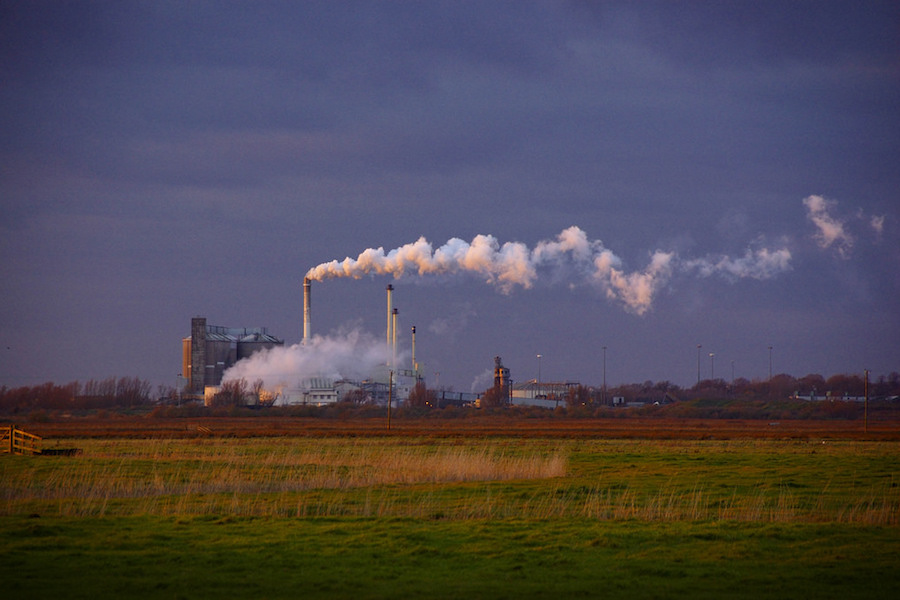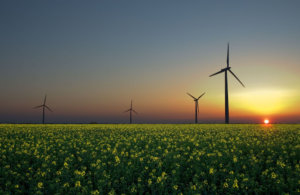Originally published by McKinsey & Company
Technological advances and falling prices are driving the momentum toward low-carbon energy production across the globe. In this episode of the McKinsey Podcast, McKinsey partner Arnout de Pee and Lord Adair Turner, chair of the Energy Transitions Commission and the Institute for New Economic Thinking, speak with McKinsey Publishing’s Cait Murphy about the shift toward renewable resources and the future of sustainable development.
Transcript
Cait Murphy: How can the world produce the energy it needs to broaden prosperity without damaging the environment beyond repair? The Energy Transitions Commission, whose members comprise leaders from the public, private, and social sectors, is dedicated to answering that question.
Speaking with us today is Lord Adair Turner, head of the Energy Transitions Commission, and Arnout de Pee, a partner at McKinsey’s Sustainability and Resource Productivity group. I’m Cait Murphy of McKinsey Publishing.
Let’s start with the broad question. Lord Turner, what is meant by the term “the energy transition,” and why is such a transition necessary?
Lord Adair Turner: The term “energy transition” describes the fact that over the next several decades, we are going to have to achieve a really dramatic transition in the world away from reliance on fossil fuels. Fossil fuels have been absolutely essential to the original industrial revolution, to the growth of prosperity that we’ve achieved in an increasing number of countries over the last 200 years.
In order to limit global warming to below two degrees centigrade above preindustrial levels, we will have to really very significantly move away from fossil fuels, while still delivering in many countries even more energy use than there is today.
And that’s what we mean by the energy transition; how do we build economies using enough energy to deliver prosperity for everybody, but with much reduced carbon emissions.
Arnout de Pee: One word to stress here is also the economic implication. So, for many nations, it is no longer only an energy transition, but also an industrial or an economic transition away from the activities and the way energy is being produced, the way goods are being produced, the way goods are being transported, and people are being transported to new forms and ways of that.
Cait Murphy: How will the energy transition look across different regions such as Asia, Africa, Europe, and North and South America?
Lord Adair Turner: Probably to have a reasonable standard of living, you need to consume maybe 80 to 100 of what are called gigajoules of energy per capita per annum. The European Union’s average is now about 130. We could get more efficient and still have our standard of living.
America uses about 200. They could get much more efficient. A country like India is still only consuming about 25 gigajoules per capita, so even if it gets much, much more efficient, if it’s going to have a prosperous lifestyle, they’re going to consume a lot more energy. So, first of all, we have some countries where the challenge is actually reducing energy use, others where it is growing, but not growing energy use as much as you grow in prosperity. That’s one big difference.
Arnout de Pee: I think the dimension to add is also the composition of the economy. There is a large difference between being a service economy versus being heavily industrialized. Given that, for instance, China is moving more and more to a service economy, their pathway toward decarbonization is going to be very different from those countries that are going to be building up industrial activity. So, I think that that’s another angle to the problem that makes China different from India, makes it different from Malaysia.
Cait Murphy: If the goal then is to change the way that goods are moved and produced and how people get around, how do we get there?
Lord Adair Turner: So, we’ve just got to get much more efficient at how we get prosperity out of the energy we use. But whatever the energy we use, we’ve got to increase the extent to which that comes from zero-carbon sources.
And it’s those two things, use energy more efficiently and decarbonize, as we call it, the sources of energy; put those two together and we can drive CO2 emissions down to the level which is required to stay well below two degrees. It is, however, a very big challenge upon both of those dimensions.
Cait Murphy: How do we get there in terms of specific technologies?
Lord Adair Turner: We know how to take the carbon out of electricity production.
We know that there is a collapsing price now of renewable energy from solar photovoltaics or from wind. And that means that if you combine that with batteries, which are also collapsing in cost, or with gas turbines as backup, we are very confident that we will be able within 15 years to build energy systems—electricity production systems which rely almost entirely on renewables and which produce all the electricity that we eventually need—at a price of only seven US cents per kilowatt-hour.
And that’s completely competitive with fossil-fuel production. We can start having cars or automobiles which run on electricity. We can get more domestic heat from electricity. We can electrify more of the economy, and that’s a very, very attractive thing also in terms of local air pollution. The challenge then becomes that there’s a whole set of functions in the economy, things like producing steel, producing cement, making airplanes fly, where it’s not clear that we can electrify it, so that even if we’ve got low-carbon electricity, we don’t have the solution.
Arnout de Pee: We’re now moving to looking more at the demand side of the energy system, just like Adair said. What do you do with industry? What do you do with heavy-duty transport? What do you do with building heating, where electrification is not the economic solution?
Plus, these are systems with very long lifetimes of over 30 and 40 years. So, even if you would have a greenfield, new-build solution that will be able to produce steel or chemicals at zero carbon, then you would still be left with an enormous amount of brownfield capacity, where changing the process, moving to an electric furnace or a hydrogen furnace, comes at additional capex cost.
Lord Adair Turner: One of the things that we should be looking at in these industrial-materials areas is how we recycle much more, how we get more of a circular economy so that we don’t need to produce as much new raw steel. One vision is that the steel industry eventually will be essentially recycling steel that we’ve already made.
Now, recycling steel that you’ve already made, you can electrify with electric arc furnaces, whereas producing more steel in the first place is pretty difficult to electrify, and we may have to find other routes. We need to be thinking about how we move to a more recycled economy where we’re not adding to the stock of these materials in future.
So, the different dimensions tend to overlap in practice, but the key message is the bit which we think unsolvable is solvable here, and that is: Are you going to be able to heat and light your house from clean energy? Yes, because there’s going to be clean electricity. Are we going to be able to produce steel, cement in a clean way? We’ve really got to work out the details of how we do that.
Cait Murphy: What about the business and investment community? What can they be doing to be part of this transition? And why would they want to?
Lord Adair Turner: Some businesses absolutely want to be part of it. I mean, there are now huge businesses in the solar space, the wind space, the electric-car space, the battery space. These are huge businesses making very, very big investment commitments. I think for investors the challenge is they’ve got to think through how much they want to be invested in these new technology sectors and what is their approach to investment in the fossil-fuel sectors.
We will need fossil fuels for some time. Some of them have got to go into decline very quickly. I would say coal, particularly in the developed economies. Oil will reach a peak and come down. Gas has to flatten out. But if oil reaches a peak and comes down, there is still a need for investment in some of the existing fields to meet even a declining level of total oil production. So, you can’t have a simplistic point of view that says, “All oil investment has got to stop tomorrow.”
On the other hand, investors in oil and gas and certainly coal companies have got to make sure that they don’t end up investing in assets which are too high cost to make sense in the world where the total demand for fossil fuels is going to come down.
Most of the energy companies I talk to, what they need is a longer-term outlook of how policy will develop in order for them to make the investment choices that meet that future outlook. As long as we don’t have that, it becomes very challenging for energy companies to make proper investment decisions here.
As Adair puts it, the energy transition is not a radical shift to only renewables and no more fossil fuels. There is going be a long period ahead of us where these two will have to go hand-in-hand, where we will be still reliant on the ramp-up of fossil fuels in some sectors to allow for economic prosperity. So, the two will have to go hand-in-hand.
Cait Murphy: What are the biggest challenges in technical, political, and social terms?
Lord Adair Turner: These are difficult transitions economically; they’re difficult transitions to get people to agree with. So, yeah, that’s a challenge. There’s also a challenge, I think, about timing, and about speed at which we progress.
Am I confident that we can get there fast enough to avoid putting so much stock of CO2 into the atmosphere that we have excessive warming? I believe we can do it, but we have to try hard to meet that challenge. So, the challenge is not is the end point possible; it’s the pace at which we’ve got to get there.
Arnout de Pee: One big challenge is we’ve talked a lot about electricity. Electricity is currently less than a fifth of the total amount of energy that we’re consuming, and also the way that our energy infrastructure is set up, the way energy flows between nations, the way energy is stored in countries is all on the basis typically of fossil fuels.
That entire energy system, the backbone, will have to change alongside everything that we’ve already been mentioning on energy demand and supply. But also between seasons, there will be flows of energy that will be very different than we have today. I think there is still an enormous challenge. I see it as a positive challenge for technology innovation to solve the energy-systems issues of the future.
Lord Adair Turner: We need to get some changes in behaviors, and we need to incentivize them and encourage them. But here’s the interesting point about the electric car, which in theory it enables us to shift electricity use around the day. But unless we work out how to make that happen with price incentives and software and mechanisms of management that make it easy for people to leave their car, their automobile on the driveway and have it switch on the charger at 2 in the morning, unless we do that, electric cars could make some of the problems of electricity management systems worse.
If everybody who drives an electric car comes back home at 6:30 in the evening and all plug it in simultaneously, then we’ve got a bigger problem of managing electricity supply and demand than we have at the moment.
It’s very technologically exciting. It’s an area where the application of information and communications technology can achieve some wonderful things for the world. But there’s a lot of new business ideas, implementation, and in some cases, appropriate regulation has got to be got right to unleash that potential.
Cait Murphy: What are some policies and approaches that governments have used that you find interesting and useful? Either to decarbonize or to increase efficiency?
Lord Adair Turner: Well, we know two things that work, one on the decarbonizing side and one on the sort of energy-efficiency side. On the decarbonizing electricity, we began with a set of experiments about how to encourage renewable-energy takeoff, direct subsidies, et cetera.
And increasingly, what we’ve migrated to is a system of fixed-price auctions, which simply says to the solar farm or the wind farm, “How cheap can you get the delivery of kilowatt-hours of electricity?” What the contract’s essentially saying is, “If you get it really cheap, the system will take that electricity whenever you produce it, and then we’ll sort out the backup problems,” sometimes called a “take or pay” contract.
These are very efficient ways of derisking, and they’re what have driven these dramatic reductions that we’ve seen recently in the prices at auction for renewable-energy provision.
And then when I think you switch around to the energy productivity side, the appliance regulation, the process of saying that regulators are going go through a series of generations—with light bulbs, for instance—you’re creating an environment where there’s a year beyond which you can’t use an incandescent light bulb, and then a year beyond which you can’t use, you know, a halogen light bulb, and a year beyond which you can’t use compact fluorescent.
And you drive a certainty for the LED producers, that there’s going to be a big market for them, and because of that certainty, they invest at scale, and because of that certainty, by the time you get to that regulatory date, the price has come thumping down. Those sort of pull-through regulations, they work well.
Arnout de Pee: Yeah, I think another one too is the emission standards that have been set for cars, for industries, for insulation of homes. Especially when they are given a longer-term trajectory, they’re going get a clarity for investment, and it gives clarity for producers or the OEMs of the equipment and the appliances to start investing in this supply chain in a way that they will understand how they can make a return in five or ten years from now.
If I talk to players, for instance, in the wind industry, what they’re also asking for is, “Give us a longer-term ambition that we can work toward,” because whether we’re moving in a market that is 5 or 50 gigawatts in size for a certain region has enormous implication on the type of supply chain that you ramp up.
The better you are in at least understanding what that risk is, the easier it gets to get proper financing and also to place that risk there in the value chain where it can be best managed.
Lord Adair Turner: I think that’s absolutely right. So it’s a very sort of self-reinforcing circular process that scale commitment drives cost reduction, which makes the scale commitment cheap when you actually get it. I think actually the Netherlands has been doing this pretty well recently, with its offshore developments, where we’ve seen the latest in the course of the last year; we’ve seen some incredibly aggressive bids offshore of the Netherlands, for offshore wind, coming down to $54 per megawatt hour.
Cait Murphy: Two big ideas are getting a lot of attention: cap and trade and a carbon tax. Do you think these are useful ways of addressing the decarbonization side of the equation?
Lord Adair Turner: Look, on the carbon tax idea, it’s absolutely clear that it would be extremely useful in different segments of the economy, if we had significant carbon prices and commitments to rising carbon prices.
What I would be very wary of, and you sometimes get this with a sort of an ideology, which is, “Well, a carbon price can be an answer to everything. And if we had a good carbon price, you could just get rid of all other regulation.”
Carbon prices work best where you’ve got business managers making decisions, looking at future costs. Ask yourself this: Would you persuade the ordinary householder to switch from an incandescent light bulb to an LED light bulb by the expectation of a future carbon price? Most normal, sensible human beings just don’t run their life like that. And given that they don’t run their life like that, that is an area where regulation is more powerful than price.
Switch over to some of the industrial sectors and the need to search out precisely how we’re going decarbonize chemicals, refining. There, a carbon price would be important, and I think it’s actually essential to help drive some of the change that we want.
Then the rest is all traded on an international market, where the price difference can be as small as a few percentage points. So, penalizing a region with a CO2 price might stifle a certain part of the industry that’s acting in the global marketplace.
Lord Adair Turner: The other thing just to comment on is the difference between a tax and a cap-and-trade system. I mean, in absolute theory, you set the total amount of emissions and you have that on a declining path, as there is within the emissions trading scheme. And then the price process with the market decides the price, and that’s an efficient way to do it.
It depends crucially on having a tight enough set of emissions, permits that are in the auction. And the problem that the flagship emission-trading scheme of the world has had, which is the European emissions-trading scheme, is due to a set of political decisions, frankly; there were just far too many emission permits out there. Tons of emissions allowed, and that meant that the price was very low and also very fluctuating, and really wasn’t a powerful indicator. I think we sort of realized that there may be advantages in progressing through a tax side.
Cait Murphy: Most people are familiar with major renewables, such as wind, solar, and biomass. What are some other technologies that you find interesting or promising?
Lord Adair Turner: The whole technology suite of batteries and other forms of energy storage is hugely important. We have these amazingly strong and plentiful energy sources, in particular solar. Every day, the sun radiates on earth about five thousand times as much energy as the entire human race needs to support a prosperous lifestyle.
But one of the big problems is storage. Now, batteries are a very important technology, and it is going to go through a whole series of waves. And it’s not just a matter of the cost. It’s also a matter of the weight; how many kilowatt-hours of energy can you get in a kilogram of batteries?
I think that’s going to be a hugely important technological development, but there are also other ways of storing energy. You can store energy by pumping water uphill, by compressing air. One of the biggest problems we have in the world is not where does energy come from, but the ability to generate it at one hour and use it at another. And anything that solves that is hugely valuable.
Can you imagine what would happen if you would be able to switch on and switch off or hybridize 30 or 40 percent of energy demand for an industry, because you have a system of electric boilers combined with hydrogen or gas boilers? I find that hugely stimulating also because there’s a high-tech component to it.
The third thing I would mention is carbon capture and storage and then also usage. When you look at the difficult-to-abate sectors in industry, there is still a wealth of opportunity to capture that CO2, and to either store it or use it in products, either through circularity or through another process, which for now are still expensive.
Cait Murphy: You have both been engaged in the climate-change and energy debate for many years. What’s changed?
Lord Adair Turner: Well, I have been interested in the whole issue of climate change for 20 years, but I first got sort of significantly involved in it, in terms of commitment of my time, when in early 2008, I was made the first chair of the UK Climate Change Committee, which is charged with driving UK emissions down by our legal commitment to 80 percent below 1990 levels by 2050.
I suspect if I was to dig out the reports that we produced in the first year of my committee about what we thought was going to happen to the price of wind, the price of solar, or the price of batteries, I would just be embarrassed by how we failed to see the pace at which the costs were going to come down.
Arnout de Pee: The way I would say it, ten years ago, we were still thinking in linear terms, when we looked at price projections and the speed at which things could change. I think we’ve grown a little bit more used to it, that some of these cost curves actually follow a very different path [from a linear one] that is, being exponential.
And for me, that’s hugely exciting, because that also tells us that there might be lots of different areas where we’re also applying a linear way of projecting how quickly costs can go down or how quickly the penetration can increase. Well, actually, we have it all wrong. It can go a lot quicker.
Cait Murphy: Thank you both very much for a fascinating conversation.
Lord Adair Turner: Thanks very much. It’s been a great discussion.
Arnout de Pee: Thanks for a good discussion.
Cait Murphy: And for those who’d like to know more about what McKinsey is doing on this subject, please visit McKinsey.com.
About the Author(s)
Arnout de Pee is a partner in McKinsey’s Amsterdam office. Lord Adair Turner is the chair of the Energy Transitions Commission and the Institute for New Economic Thinking. Cait Murphy is a senior editor of McKinsey Publishing.
About the Author(s)
Arnout de Pee is a partner in McKinsey’s Amsterdam office. Lord Adair Turner is the chair of the Energy Transitions Commission and the Institute for New Economic Thinking. Cait Murphy is a senior editor of McKinsey Publishing.







